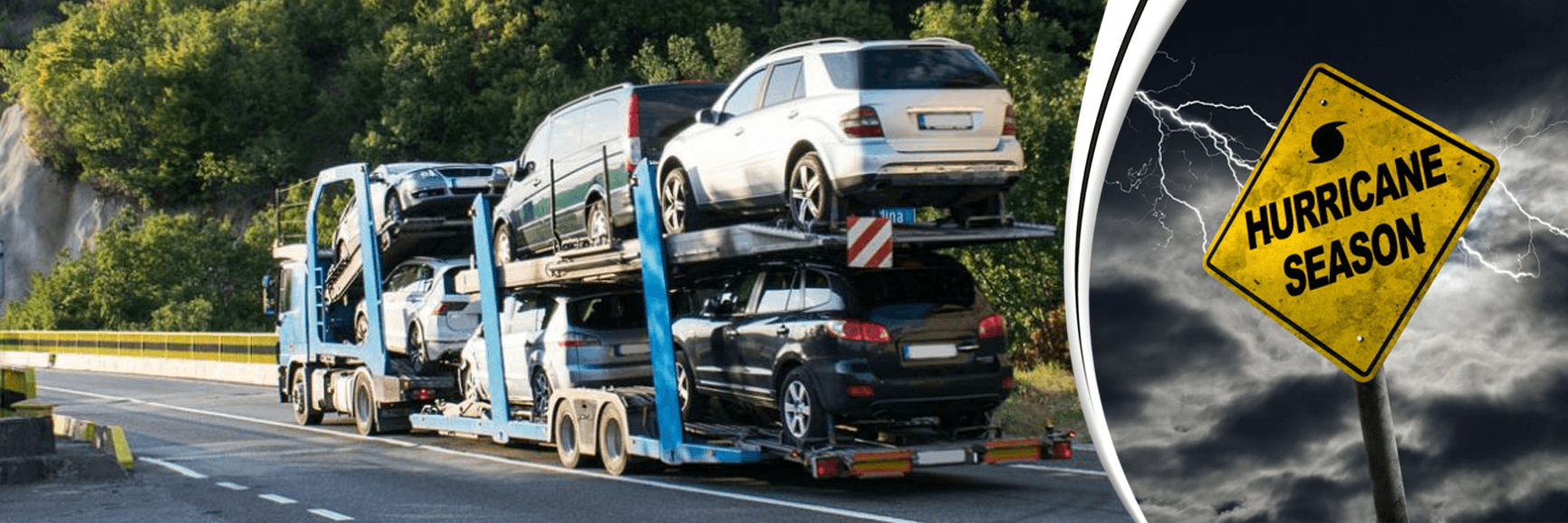
How to Protect Your Car from a Hurricane? A Thorough Guide
Follow all How to Prepare Your Car in Advance from Hurricane: 12 Tips You Need to Know
1. Check your insurance policy
Check out from your auto transport insurance provider about the insurance coverage provided against the hurricane specific damages.
2. Maintain the necessary documents
Keep your vehicle registration, insurance papers, and essential documents in a waterproof container.
3. Plan your evacuation route
Know the designated evacuation routes in your area and plan your journey accordingly.
4. Park in a safe location
If possible, park your car in a covered garage or a safe, elevated area. Avoid parking under trees or power lines that can fall during intense winds. Debris and falling branches can cause structural damage, broken windows, and dented bodywork to your vehicle. To reduce the risk, seek an accessible area away from potential hazards.
5. Emergency Survival Kit
Do not forget to prepare an emergency kit to place in your car permanently. This kit should include the items such as water, non-perishable food stuff, blankets and flashlight. This kit will provide you with a chance to use your vehicle as shelter if needed during the hurricane.
6. Keep the tank filled
Maintain a full gas tank in case of emergencies or necessary evacuations.
7. Remove loose objects
Secure or remove any loose objects inside and outside the car that can become projectiles during high winds.
8. Close the windows and sunroof
Seal all windows and the sunroof tightly to prevent water from entering the vehicle.
9. Take Photos of Your Car
Take detailed photos of your car's exterior and interior before the storm hits. These pictures can help you file an insurance claim if your vehicle gets severe damage during the storm and could save you significant money on repairs.
10. Disconnect the battery
Consider unplugging the car if you keep it parked for a long time to avoid alarm systems or accessories draining the power supply.
11. Use sandbags
Sandbags can be used to build a barrier around your car to keep water from getting to it.
12. Cover your car
Protect it from flying objects and water with a robust, waterproof tarp. To keep the tarp from blowing away, you must ensure it is attached well.
What to Do During the Hurricane
1. Stay informed
Stay updated with local weather reports and follow instructions from local authorities.
2. Stay put
Avoid driving during the storm unless it is necessary.
3. Turn off electrical devices
Disconnect batteries, unplug electronic devices, and remove radio antennas.
4. Move to the higher ground
In case you are outside, move to a highest ground point. Do not try to drive, walk or swim in the floodwater.
Necessary Steps After the Hurricane
1. Assess for damage
After the hurricane, thoroughly inspect your car for any damage. Take photographs for insurance purposes.
2. Check for water damage
Check out for different signs indicating about the water intrusion. These signs may include indications of water spots over damp carpets or fogged-up windows.
3. Avoid starting a flooded car
Do not try to start your vehicle in case your vehicle had submerged in the flooded water. Tow it for professional inspection and repair.
4. Contact your insurance provider
Contact your insurance provider immediately after estimating the damage. Follow the insurance company’s instructions to file an insurance claim against the damage.
5. Reach out
You should try reaching out to your family and friends circle by contacting them. You should tell them about the current location and what you possibly need immediately. You can return once the authorities issue a safety declaration. Return home only after the authorities have issued a safe-to-do statement.
6. Floodwaters
void floodwater that may be electrically charged from underground or downed power lines. In addition, be extra vigilant, as floodwater could hide dangerous debris and areas where the ground has washed away.
Conclusion
Protection of your car at the time of a hurricane is essential. It requires advance planning, preparation and high degree of vigilance to exercise. By following the comprehensive guidelines mentioned in this blog post, you may easily minimize the different damages and risks pertaining to your car and family’s security. Do remember that in the extreme weather conditions and challenges, your own personal security becomes the fundamental thing to consider the most. You will need to prioritize everything by considering different aspects of wellness. Stay safe!